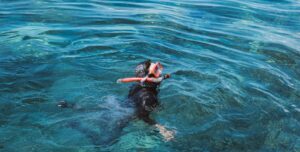Discover the importance of endangered tree species and learn how to make a difference in preserving them.
Petrina Darrah
Posted: May 20, 2023

Sarah Lustig
Posted: March 23, 2023
Coastal dunes are one of the most amazing features of nature and provide numerous benefits to both ecosystems and people. From influencing local climates and acting as natural barriers for storms and flooding to providing homes for a variety of species, these ecosystems cannot be overlooked. In this article, we explore the ecology and conservation of coastal dunes in detail.
Coastal dunes are dynamic, shifting features of a shoreline that form from the accumulation of sand over time. They are typically composed of sedimentary particles such as clay, silt, and sand and are shaped by the wind, waves, and tides. In addition to providing habitats for plants, animals, and microorganisms, coastal dunes help to protect beaches, coasts, and even inland areas from various disturbances like extreme weather conditions, storm surges, and sea level rise.
The biodiversity of coastal dunes depends on the local environment; typically they’re home to a variety of plant species such as grasses, perennial and annual herbs, shrubs, and succulents. Animals, including nesting birds and amphibians like frogs, also find refuge in these ecosystems. As for microbial life, coastal dunes contain nearly invisible organisms like bacteria, archaea, protists, this microbial life may affect nutrient cycling and help to control pest populations, which in turn allows for more successful vegetation growth.
Coastal dunes also provide a buffer against coastal erosion, as they absorb the energy of waves and storms. This helps to protect the shoreline from further damage and can even help to reduce flooding in nearby areas. In addition, coastal dunes can help to reduce air and water pollution, as they act as a natural filter for pollutants. As such, they are an important part of any coastal ecosystem and should be protected and preserved.
Human activities can significantly alter coastal dunes, often leading to the destruction of this important habitat. Developments like roads, housing, industry, and recreation can all have a detrimental effect on coastal dunes by hampering their formation, reducing biodiversity, and fragmented or removing them altogether. Additionally, pollution and climate change have far-reaching effects on the health of these ecosystems. The introduction of fertilizers and other nutrients into the system through runoff can likewise alter the chemical composition of coastal dunes and reduce their biodiversity.
The destruction of coastal dunes can have a ripple effect on the surrounding environment. For example, the loss of dunes can lead to increased erosion of beaches, which can in turn lead to the destruction of other habitats, such as coral reefs. Additionally, the loss of dunes can lead to a decrease in the number of species that rely on them for food and shelter, as well as a decrease in the number of recreational opportunities available to humans. It is therefore important to take steps to protect coastal dunes from human activities.

Climate change has a large impact on coastal dunes, particularly when it comes to sea level rise. As waters become warmer and rise higher, saltwater inundation can become a major threat to the structure of a coastal dune. Warmer temperatures can also push dune-forming plants further up the slope in search of cooler climates, leading to shifting dunes and potentially accelerated erosion. Another significant effect of climate change is drought and the subsequent loss of vegetation on the dunes.
The biodiversity of coastal dunes is intimately linked to their environment. In order to maintain ecological balance in these systems, it’s important to understand the various species that inhabit coastal dunes as well as their interactions. Plants are particularly important here as they provide food and shelter for animals, stabilise the dune’s surface, and protect from wind, waves, and saltwater inundation. Typical coastal dune plants include grasses, shrubs, perennial and annual herbs, succulents, and cacti.
Besides plants, coastal dunes offer habitat for a multitude of animals. Birds like terns and plovers rely on them for nesting sites while amphibians like frogs use them for shelter. Mammals such as gophers, coyotes, and foxes also find refuge in these unique ecosystems. Plant-animal interactions in coastal dunes are key components to a healthy ecosystem as they regulate the number of species present as well as regulate carbon sequestration among others.
In order to preserve these ecosystems, it’s important to develop conservation strategies that take both human activities and climate change into account. Some strategies include replanting native vegetation on the dune to provide food and refuge for wildlife; creating buffers around the dune by fencing off beach access or planting trees; decreasing pollution by encouraging regulations on fertiliser use or catchment systems for runoff; and restoring damaged areas by planting new beach contours or re-vegetating eroded sections.
In order to gain a better understanding of how these ecosystems function, it’s necessary to explore opportunities for conducting research in coastal dune ecosystems. Instead of relying solely on theoretical knowledge, empirical research should be conducted in order to gain further insight into factors like ecology or human activities’ effects on these ecosystems. These studies would ideally use multidisciplinary methodologies that take numerous factors into account.
GVI’s marine conservation programs links your research efforts to the most cutting edge coastal ecology research in locations across the world. By working directly with local communities, GVI is able to offer you a meaningful experience where you can make a significant and sustainable contribution to coastal ecosystems. Join this cause.

Discover the importance of endangered tree species and learn how to make a difference in preserving them.
Petrina Darrah
Posted: May 20, 2023